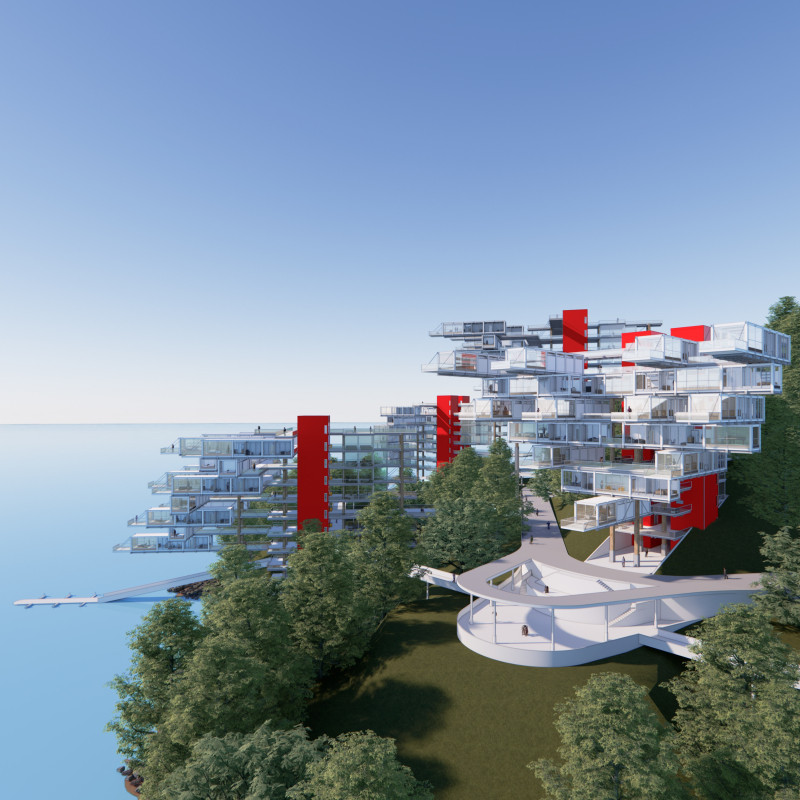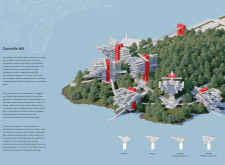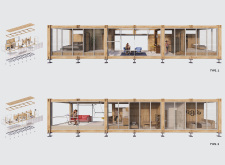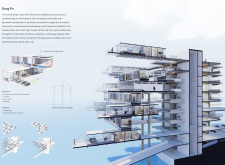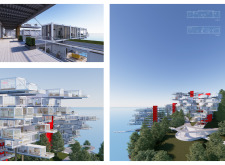5 key facts about this project
At its core, Camellia Hill functions as a modular housing system that redefines conventional residential living. Each unit is thoughtfully designed to not only optimize space but also to encourage interaction among residents. The arrangement of these modular units creates opportunities for community engagement, making it more than just a series of homes; it fosters a sense of belonging and connectivity among inhabitants. The design recognizes that living spaces should be adaptable, allowing for a variety of family sizes and dynamics while remaining sensitive to the ecological footprint.
The architectural features of the project emphasize simplicity and functionality. The choice of materials is guided by principles of sustainability and environmental integration. Wood, as a primary structural element, provides warmth and a sense of connection to the natural surroundings. Its renewable nature supports the project’s ecological goals. The extensive use of glass in the facades allows natural light to permeate the interiors, reducing the dependency on artificial lighting and promoting a healthy living environment. This choice also facilitates a visual connection between indoor spaces and the surrounding landscape, reinforcing the project's commitment to blending architecture with nature.
Unique design approaches are evident throughout Camellia Hill. The modular design allows for flexibility; units can be configured in various arrangements to suit the needs of their occupants. This adaptability extends to the vertical stacking of modules, enabling efficient use of space while enhancing views and access to outdoor areas. The integration of communal spaces is a deliberate design strategy aimed at promoting interaction among residents. Shared terraces and gardens serve as social hubs, encouraging community life and outdoor activities.
Moreover, the project addresses modern environmental challenges through the implementation of sustainable technologies. Features such as rainwater harvesting systems and solar panels are incorporated into the design, enhancing the energy efficiency of the units. Wind turbines may also play a role in further reducing the ecological impact, allowing residents to engage with renewable energy sources. This holistic approach to sustainability is not only practical but also serves as an educational platform for residents about eco-friendly living practices.
Camellia Hill exemplifies how thoughtful architecture can provide solutions to urban living challenges. Its innovative design approaches reflect a commitment to sustainability, community engagement, and adaptability. For those interested in exploring this project further, delving into architectural plans, sections, designs, and ideas will yield deeper insights into the application of these principles and the outcomes they achieve. This exploration can uncover the details that make Camellia Hill a notable example of contemporary architectural thinking aimed at improving residential living in a sustainable manner.


